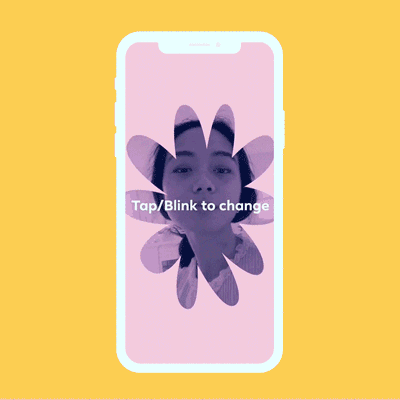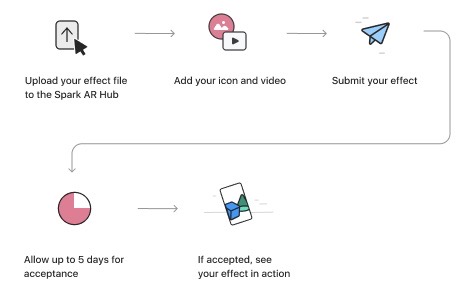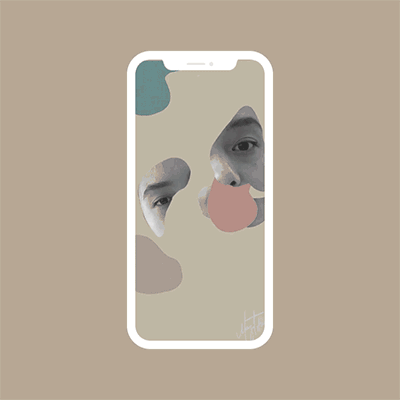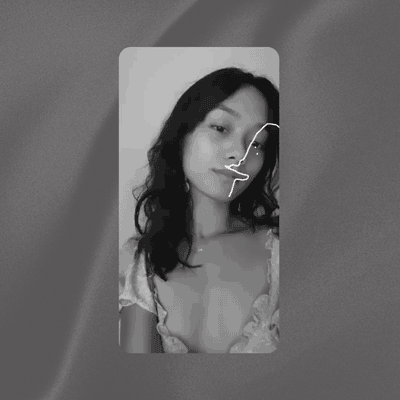
Did you know you can harness the power of Instagram filters to promote your music?
Yes, the same silly feature people use to change their faces into mice and pineapples can help you boost your views and get your music circulating on Stories and Reels.
For musicians that either have design skills or the initiative to figure things out, Instagram Filters can be a really effective way to promote your music for free. For musicians who want to hire a freelance designer to create your custom Instagram filter, you have a world of affordable options.
But before we get into the how, let’s address the what first.
What is an Instagram filter?
An Instagram filter is a feature on Instagram used to enhance videos and pictures in an interesting way. That enhancement can be decorative or interactive, but either way it must be creative. This interactive experience is called “Augmented Reality,” since it… augments reality… by changing the media captured with the user’s mobile device.
CD Baby’s own Margaret Alba is a designer who’s been creating filters since Instagram launched the beta version in 2018. She now makes filters for musicians as a freelancer. In her experience, “Your average Instagram user will only post something with a filter if they’re confident in it or it’s fun.”
The filter should convey something unique about the artist, yes — but it also has to say something about the person USING the filter. After all, they’re the one posting the content.
So the best Instagram filters help your fans:
- Tell their own story
- Entertain their friends
- Establish social cachet
- Discover something they didn’t know about themselves
- Share their enthusiasm
- Differentiate themselves on a crowded social platform
- Find their community
- Get more access to you as an artist


A good Instagram filter will help you as an artist:
- Spread awareness for your music
- Deepen your connection with listeners
- Brand your newest release or sound
- Demonstrate how with it you are
- And maybe even boost social following and sales
How do I create an Instagram filter?
If you want to go the ultra-creative route and make your own Instagram filters for your music, you’ll want to start by checking out a program called Spark AR. Instagram created this program for users to make, upload, and share their own filters.
But, Alba warns, “The learning curve can be tough. I work with a lot of design tools and it wasn’t like any of the products I had used previously.”
However, Alba says that Instagram has made Spark AR more intuitive over the years. For one, “There’s more information accessible, and there are more templates,” she says.
There are also video courses on Spark AR’s website so you can learn from expert creators.
Plus, there’s a plethora of Spark AR tutorials on YouTube to get you started at any level of coding experience.
Here are the basic steps to make an Instagram filter for your music:
- Download Spark AR.
- Select a template/effect: Yes, you can create a filter from scratch, but why not just get your feet wet first? If you’re just starting out, a simple concept is probably best.
- Upload the “asset” you want to manipulate.
- Play around with how that asset is transformed. You can manipulate the colors, orientation, movement, textures, etc.
- Use the Spark AR Player app to test your filter.
- Publish your filter so Instagram and Facebook users can try it out!


It’s not all about Spark AR!
“There are filters you can create without design programs,” says Alba. “But you can only go so far with Spark AR.” To create the really original filters, you’ll need to work with other design programs.
Want to add your band name or logo? “You can use art programs like PhotoShop or Illustrator,” says Alba. “Or Blender, which is free.”
But the best free design program for beginners might be Canva. Here’s where Alba gets really creative with her ideas. “You can make a simple frame and make it a transparent .png and put images on there,” she says. “Maybe your logo or images that fit your brand or album. Then export it as a .png and you can place it into Spark AR. You can input an image as a frame for a filter.”
How do I format my audio for use in filters?
Instagram requires any audio used for filters meet the following specifications:
- .M4A format
- 44.1 khz
- Mono
The audio files must meet these exact requirements because filters are designed to be short, light videos. So the files themselves must be small.
If you’re an indie artist who records your own music, chances are you already have the necessary software on your computer to convert your files. If not, there are several free audio converting sites out there.
What are the file requirements for a filter?
The maximum file size for a filter effect is 4MB. And Instagram caps the length of the audio uploaded at 15 seconds, so choose the section of your song wisely! As Alba says, “Which part is the punch?”
Can someone else create Instagram filters for me?
Don’t want to go the full DIY deep-dive into Filterland? There are plenty of designers like Alba who have put in the time to become experts in creating filters. “You can use Fiver or search for Facebook groups with designers to find someone to create a filter for you,” says Alba.
To find an Instagram Filter designer:
- Check out the top-recommended Instagram filter designers are Fiverr
- You can also type “Instagram Filter” or “Spark AR” into Fiverr’s search and see a long list of affordable freelancers
- Ask your musician friends
“I’ve been getting projects from word of mouth,” she continues. “I worked on one filter for a musician and through that I was able to create filters for other musicians they knew.”
So, if you don’t know any designers personally, ask another artist in your scene.
Even better, if you’ve seen another musician who’s already posted filters for their music, ask how they made it. If they used a designer, they could recommend the same person, just as Alba’s clients have. Or if they were super ambitious and learned the ropes of Spark AR themselves and created the filter on their own, ask them to teach you. Or ask them if they can make one for you!


What makes a good Instagram filter?
This part might sound a bit subjective, but it’s mostly common sense.
“You want something that reflects the artist,” says Alba. “I try to emulate brands where everything is cohesive.”
A really good filter can be something as simple as the cover to your newest single or album. “I worked with an artist who had a space theme for their album, so we made a filter with stars,” says Alba. “When users used the filter it looked like they were in space, so you can also emulate what your album looks like and make it interactive.”
But really, Alba says, “A good filter for a musician is something that is fun and interactive. There was one musician where we cut out her face on her album. She has these iconic red gloves and users can now be the person with the red gloves. We had the viewer be able to wear them on the filter.”
If you’re looking for something simpler, Alba recommends “subtle light effects on a face. It’s a very fast and light way to create a good effect.”
She means “light” in that there isn’t too much going on in the filter. That’s because too many effects in one filter can slow it down. And, just like any bit of tech, “If it’s too slow people won’t use it.”


How long does it take for filters to be approved?
Just like submitting your music for digital distribution, there is an approval process for Instagram filters. “I always recommend musicians plan their filters at least a month before, just because the planning process is unpredictable,” says Alba.
In Alba’s experience, the approval process can be as little as a few days, but Instagram does inform users who submit new filters that it can take up to a few weeks.
Get creative!
The last thing to remember — whether you’re creating your own filters or enlisting the expertise of a designer — is to have fun. Instagram filters should be enjoyable for others to use, because the more users share your filter, the more your music is shared.
“It’s an ad but it’s interactive,” says Alba. “Fans can insert themselves into your vision. Someone can interact with your album.”